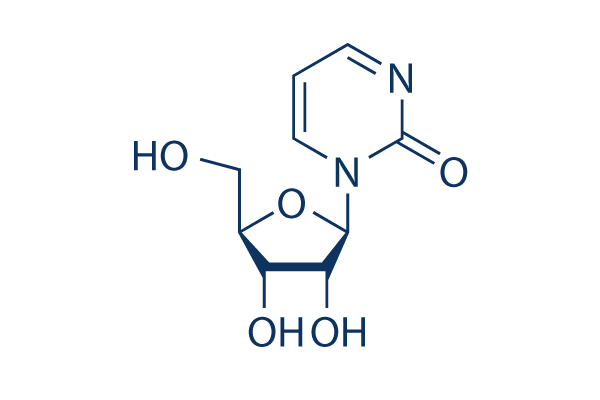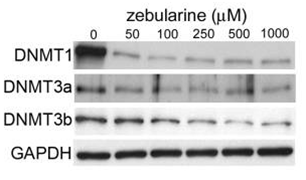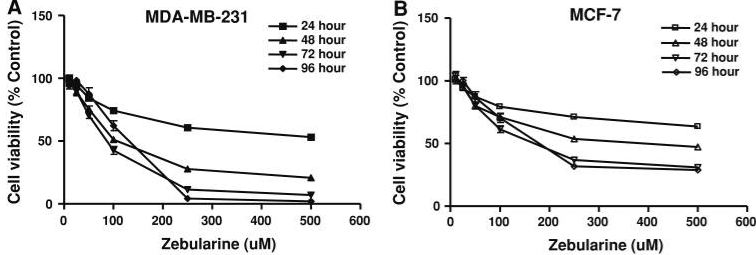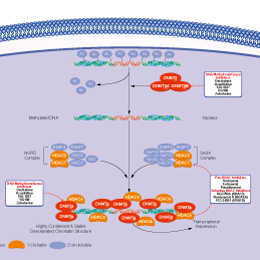
- Bioactive Compounds
- By Signaling Pathways
- PI3K/Akt/mTOR
- Epigenetics
- Methylation
- Immunology & Inflammation
- Protein Tyrosine Kinase
- Angiogenesis
- Apoptosis
- Autophagy
- ER stress & UPR
- JAK/STAT
- MAPK
- Cytoskeletal Signaling
- Cell Cycle
- TGF-beta/Smad
- DNA Damage/DNA Repair
- Compound Libraries
- Popular Compound Libraries
- Customize Library
- Clinical and FDA-approved Related
- Bioactive Compound Libraries
- Inhibitor Related
- Natural Product Related
- Metabolism Related
- Cell Death Related
- By Signaling Pathway
- By Disease
- Anti-infection and Antiviral Related
- Neuronal and Immunology Related
- Fragment and Covalent Related
- FDA-approved Drug Library
- FDA-approved & Passed Phase I Drug Library
- Preclinical/Clinical Compound Library
- Bioactive Compound Library-I
- Bioactive Compound Library-Ⅱ
- Kinase Inhibitor Library
- Express-Pick Library
- Natural Product Library
- Human Endogenous Metabolite Compound Library
- Alkaloid Compound LibraryNew
- Angiogenesis Related compound Library
- Anti-Aging Compound Library
- Anti-alzheimer Disease Compound Library
- Antibiotics compound Library
- Anti-cancer Compound Library
- Anti-cancer Compound Library-Ⅱ
- Anti-cancer Metabolism Compound Library
- Anti-Cardiovascular Disease Compound Library
- Anti-diabetic Compound Library
- Anti-infection Compound Library
- Antioxidant Compound Library
- Anti-parasitic Compound Library
- Antiviral Compound Library
- Apoptosis Compound Library
- Autophagy Compound Library
- Calcium Channel Blocker LibraryNew
- Cambridge Cancer Compound Library
- Carbohydrate Metabolism Compound LibraryNew
- Cell Cycle compound library
- CNS-Penetrant Compound Library
- Covalent Inhibitor Library
- Cytokine Inhibitor LibraryNew
- Cytoskeletal Signaling Pathway Compound Library
- DNA Damage/DNA Repair compound Library
- Drug-like Compound Library
- Endoplasmic Reticulum Stress Compound Library
- Epigenetics Compound Library
- Exosome Secretion Related Compound LibraryNew
- FDA-approved Anticancer Drug LibraryNew
- Ferroptosis Compound Library
- Flavonoid Compound Library
- Fragment Library
- Glutamine Metabolism Compound Library
- Glycolysis Compound Library
- GPCR Compound Library
- Gut Microbial Metabolite Library
- HIF-1 Signaling Pathway Compound Library
- Highly Selective Inhibitor Library
- Histone modification compound library
- HTS Library for Drug Discovery
- Human Hormone Related Compound LibraryNew
- Human Transcription Factor Compound LibraryNew
- Immunology/Inflammation Compound Library
- Inhibitor Library
- Ion Channel Ligand Library
- JAK/STAT compound library
- Lipid Metabolism Compound LibraryNew
- Macrocyclic Compound Library
- MAPK Inhibitor Library
- Medicine Food Homology Compound Library
- Metabolism Compound Library
- Methylation Compound Library
- Mouse Metabolite Compound LibraryNew
- Natural Organic Compound Library
- Neuronal Signaling Compound Library
- NF-κB Signaling Compound Library
- Nucleoside Analogue Library
- Obesity Compound Library
- Oxidative Stress Compound LibraryNew
- Plant Extract Library
- Phenotypic Screening Library
- PI3K/Akt Inhibitor Library
- Protease Inhibitor Library
- Protein-protein Interaction Inhibitor Library
- Pyroptosis Compound Library
- Small Molecule Immuno-Oncology Compound Library
- Mitochondria-Targeted Compound LibraryNew
- Stem Cell Differentiation Compound LibraryNew
- Stem Cell Signaling Compound Library
- Natural Phenol Compound LibraryNew
- Natural Terpenoid Compound LibraryNew
- TGF-beta/Smad compound library
- Traditional Chinese Medicine Library
- Tyrosine Kinase Inhibitor Library
- Ubiquitination Compound Library
-
Cherry Picking
You can personalize your library with chemicals from within Selleck's inventory. Build the right library for your research endeavors by choosing from compounds in all of our available libraries.
Please contact us at [email protected] to customize your library.
You could select:
- Antibodies
- Bioreagents
- qPCR
- 2x SYBR Green qPCR Master Mix
- 2x SYBR Green qPCR Master Mix(Low ROX)
- 2x SYBR Green qPCR Master Mix(High ROX)
- Protein Assay
- Protein A/G Magnetic Beads for IP
- Anti-Flag magnetic beads
- Anti-Flag Affinity Gel
- Anti-Myc magnetic beads
- Anti-HA magnetic beads
- Magnetic Separator
- Poly DYKDDDDK Tag Peptide lyophilized powder
- Protease Inhibitor Cocktail
- Protease Inhibitor Cocktail (EDTA-Free, 100X in DMSO)
- Phosphatase Inhibitor Cocktail (2 Tubes, 100X)
- Cell Biology
- Cell Counting Kit-8 (CCK-8)
- Animal Experiment
- Mouse Direct PCR Kit (For Genotyping)
- New Products
- Contact Us
Zebularine (NSC 309132)
Synonyms: 4-Deoxyuridine
Zebularine (NSC 309132, 4-Deoxyuridine) is a DNA methylation inhibitor that forms a covalent complex with DNA methyltransferases, also inhibits cytidinedeaminase with Ki of 2 μM in a cell-free assay.

Zebularine (NSC 309132) Chemical Structure
CAS No. 3690-10-6
Purity & Quality Control
Batch:
Purity:
99.81%
99.81
Zebularine (NSC 309132) Related Products
| Related Targets | TET DNMT1 DNMT3 | Click to Expand |
|---|---|---|
| Related Products | RG108 SGI-1027 Gamma-Oryzanol Bobcat339 hydrochloride CM272 GSK3685032 β-thujaplicin | Click to Expand |
| Related Compound Libraries | Kinase Inhibitor Library FDA-approved Drug Library Natural Product Library Bioactive Compound Library-I Highly Selective Inhibitor Library | Click to Expand |
Signaling Pathway
Cell Data
| Cell Lines | Assay Type | Concentration | Incubation Time | Formulation | Activity Description | PMID |
|---|---|---|---|---|---|---|
| human T24 cells | Function assay | 100 μM | 8 days | Induction of p16 gene expression in human T24 cells at 100 uM after 8 days by real time PCR in presence of 100 mM thymidine | 19006382 | |
| human HCT15 cells | Function assay | 100 μM | 8 days | Induction of p16 gene expression in human HCT15 cells at 100 uM after 8 days by real time PCR in presence of 100 mM thymidine | 19006382 | |
| Click to View More Cell Line Experimental Data | ||||||
Biological Activity
| Description | Zebularine (NSC 309132, 4-Deoxyuridine) is a DNA methylation inhibitor that forms a covalent complex with DNA methyltransferases, also inhibits cytidinedeaminase with Ki of 2 μM in a cell-free assay. | ||||
|---|---|---|---|---|---|
| Features | Very stable with half-life of ~44 h at 37°C in PBS at pH 1.0 and approx. 508 h at pH 7. | ||||
| Targets |
|
| In vitro | ||||
| In vitro | Zebularine is a cytidine analogue containing a 2-(1H)-pyrimidinone ring, originally synthesized as a cytidine deaminase inhibitor. [2] Zebularine is shown to form a tight, covalent complex with bacterial methyltransferases. [1] In N. crassa, zebularine inhibits DNA methylation and reactivates a gene previously silenced by methylation. Zebularine is a global inhibitor of DNA methylation, similar to 5-Aza-CR, rather than a selective inhibitor. Zebularine induces the myogenic phenotype in 10T1/2 cells, which is a phenomenon unique to DNA methylation inhibitors. Zebularine reactivates a silenced p16 gene and demethylates its promoter region in T24 bladder carcinoma cells. Zebularine is only slightly cytotoxic to T24 cells. [3] Zebularine is preferentially incorporated into DNA and exhibits greater cell growth inhibition and gene expression in cancer cell lines compared to normal fibroblasts. In addition, zebularine preferentially depletes DNA methyltransferase 1 (DNMT1) and induces expression of cancer-related antigen genes in cancer cells relative to normal fibroblasts. [4] | |||
|---|---|---|---|---|
| Experimental Result Images | Methods | Biomarkers | Images | PMID |
| Western blot | DNMT1 / DNMT3a / DNMT3b CDK2 / p-Rb / Rb MeCP2 / MBD2 / MBD3 / Acetyl-H3 / Acetyl-H4 |

|
23320119 | |
| Growth inhibition assay | Cell viability |

|
19459041 | |
| In Vivo | ||
| In vivo | Zebularine is only slightly cytotoxic to tumor-bearing mice (average maximal weight change in mice treated with 1000 mg/kg zebularine = 11% [95% CI = 4% to 19%]). Compared with those in control mice, tumor volumes are statistically significantly reduced in mice treated with high-dose zebularine administered by intraperitoneal injection or by oral gavage. [3] | |
|---|---|---|
| Animal Research | Animal Models | male BALB/c nu/nu mice |
| Dosages | 500 mg/kg, 1000 mg/kg | |
| Administration | Intraperitoneal, oral | |
Chemical Information & Solubility
| Molecular Weight | 228.2 | Formula | C9H12N2O5 |
| CAS No. | 3690-10-6 | SDF | Download Zebularine (NSC 309132) SDF |
| Smiles | C1=CN(C(=O)N=C1)C2C(C(C(O2)CO)O)O | ||
| Storage (From the date of receipt) | |||
|
In vitro |
DMSO : 46 mg/mL ( (201.57 mM) Moisture-absorbing DMSO reduces solubility. Please use fresh DMSO.) Water : 46 mg/mL Ethanol : Insoluble |
Molecular Weight Calculator |
|
In vivo Add solvents to the product individually and in order. |
In vivo Formulation Calculator |
||||
Preparing Stock Solutions
Molarity Calculator
In vivo Formulation Calculator (Clear solution)
Step 1: Enter information below (Recommended: An additional animal making an allowance for loss during the experiment)
mg/kg
g
μL
Step 2: Enter the in vivo formulation (This is only the calculator, not formulation. Please contact us first if there is no in vivo formulation at the solubility Section.)
% DMSO
%
% Tween 80
% ddH2O
%DMSO
%
Calculation results:
Working concentration: mg/ml;
Method for preparing DMSO master liquid: mg drug pre-dissolved in μL DMSO ( Master liquid concentration mg/mL, Please contact us first if the concentration exceeds the DMSO solubility of the batch of drug. )
Method for preparing in vivo formulation: Take μL DMSO master liquid, next addμL PEG300, mix and clarify, next addμL Tween 80, mix and clarify, next add μL ddH2O, mix and clarify.
Method for preparing in vivo formulation: Take μL DMSO master liquid, next add μL Corn oil, mix and clarify.
Note: 1. Please make sure the liquid is clear before adding the next solvent.
2. Be sure to add the solvent(s) in order. You must ensure that the solution obtained, in the previous addition, is a clear solution before proceeding to add the next solvent. Physical methods such
as vortex, ultrasound or hot water bath can be used to aid dissolving.
Tech Support
Answers to questions you may have can be found in the inhibitor handling instructions. Topics include how to prepare stock solutions, how to store inhibitors, and issues that need special attention for cell-based assays and animal experiments.
Tel: +1-832-582-8158 Ext:3
If you have any other enquiries, please leave a message.
* Indicates a Required Field
Tags: buy Zebularine (NSC 309132) | Zebularine (NSC 309132) supplier | purchase Zebularine (NSC 309132) | Zebularine (NSC 309132) cost | Zebularine (NSC 309132) manufacturer | order Zebularine (NSC 309132) | Zebularine (NSC 309132) distributor







































